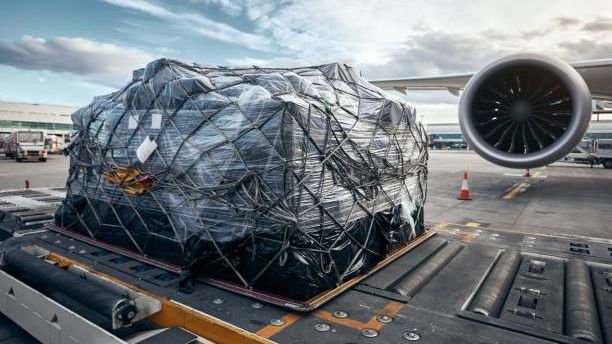Pandemic induced disruptions will remain a challenge for shippers well into 2021. Unpredictable delays and logistical bottlenecks are driving container shortages and port congestion. Factory production delays in Asia add to shippers’ strain to meeting surging demand. Carrier reliability continues to drag at all time lows while shipping costs continue to push all time highs. The volatile conditions compel companies to reevaluate well-established supply chain strategies.
The ports and marine terminals of Long Beach and Los Angeles continue to operate under restrictive Covid measures that prioritize the health and safety of longshoremen, truckers and warehouse personnel. The progress of a national vaccination initiative gives reason for hope. A vaccinated workforce will be better positioned to process the tsunami of imports.
As US ports battle backlogs, the Covid vaccine supply chain bypasses maritime congestion entirely. An unbroken cold chain is required to deliver the vaccines, syringes and needles for the massive global project. It is assumed that vaccination will encourage people to spend more money in person, which would lift the service economy and boost employment. More income to spend on more imported goods! (Could anything curb the nation’s appetite for Baby Yoda dolls?)
However spending patterns change, the surge of imports (and terminal backlogs) appears primed to continue. The National Retail Federation (NRF) is predicting record retail sales growth in 2021. Upbeat economic forecasts suggest that port congestion will remain an ongoing challenge no matter where consumer dollars go.
Dude, Where’s My Ship[ment]?
It’s probably among the 40+ vessels anchored outside the Los Angeles/Long Beach ports waiting to berth. You know, so they can unload all those containers of Christmas decorations we ordered six months ago. Congestion has become a problem (dare we say a contagion?) at many major US ports (LAX/Long Beach being the most extreme example).
With all these ships stuck at anchor outside US ports, where would they normally be if they were able to unload on schedule? The glut of container ships at US ports has thrown off sailing schedules and has caused a ship shortage in Asia. Fewer ships calling on Chinese ports exacerbates a capacity crunch for shippers already struggling to locate empty containers and find space on vessels that arrive overloaded with cargo.
LA/LB turn-around times for a 13,000 – 14,000 container capacity vessel used to be six to eight days. Now it’s 11. That may sound like a small increase, but those extra three to five days have serious knock on effects when a ship’s already weeks behind schedule due to being unable to unload on the West Coast. The shortage of ships in Asia is causing a slew of ‘forced slidings’. A forced sliding means a vessel’s scheduled arrival isn’t happening for an indeterminate amount of time. Forced slidings perpetuate a cycle of rolled cargo, cost distortions due to supply imbalance, and a pan-Pacific chorus of frustrated shippers.
To avoid crushing West Coast congestion, shippers are looking for alternative transit through other West Coast ports and even through the Gulf and East Coast ports to find any means to get their products to their customers in a reasonable amount of time at a tolerable cost.

Reliably Unreliable
For the sixth consecutive month, global schedule reliability has been the lowest recorded since Sea-Intelligence introduced the benchmark ten years ago. Global schedule reliability indicates how often vessels are arriving on time. It’s not good. In January 2021, less than 35% met their published schedule, and they’re still tallying up February’s stats.
It’s unlikely to get much better any time soon. Factories across Asia are working 24/7 to meet global demand, while US West Coast terminals are working (a respectable) 16/7 unloading ships at berth while trying to maintain social distancing(and getting priority access to the Covid vaccine). You gotta have that work/life/quarantine balance.
So Many Ports, So Little Time
COVID congestion has highlighted the need for shippers to build more elastic supply chains. Many shippers have started to look beyond Los Angeles and Long Beach ports to improve their costs and transit times. It’s not a simple task. It’s usually the larger retailers who can be flexible enough to build out alternate strategies.
What Would Sam Walton Do?
Take Walmart, they unload at over a dozen ports, including Houston and Seattle, with a network of distribution centers, rail agreements and dedicated carriers to transport their goods anywhere in the country when needed. When Walmart makes a significant routing decision, it is felt on every level of the supply chain. For example, when Walmart decided to build a 3PL facility near the relatively small Port of Charleston in South Carolina, Walmart’s business immediately increased the port’s volumes by 5%. Not many companies can afford to overhaul their supply chain infrastructure so easily. Until there is a federal infrastructure overhaul, shippers and their logistics partners are going to need to be creative in finding/building out new supply chain solutions to strategically maneuver their cargo around the country.
For shippers who don’t count their revenues in the tens of billions, the costs of surrendering to Southern California’s congestion can be difficult to avoid. Sometimes a two or three week shipping delay isn’t a major issue. Then again, supply chain failures and depleted inventories can destroy quarterly earnings, disrupt cash flows and even cause a business to go under.
Supply chain budgets are going to be stretched to manage risk. If a company is facing an immediate inventory crisis and has money to burn, there’s always air freight.

Nowhere To Go But Up! (In The Air)
The shipping industry is going through it. Companies can’t just negotiate one route to one port once a year and sit back and wait for their containers to roll in. Shippers now need to evaluate time, cost, and the sustainability of different port and destination transportation options on a shipment by shipment basis.
The air cargo industry is bouncing back with a healthy recovery since COVID outbreaks initially restricted commerce and continues to constrain passenger demand. Freight capacity is now mostly all-cargo flights because passenger traffic (and the cargo passenger flights carried) has fallen precipitously. Even with the conversion of some passenger planes into cargo planes, the drop in capacity keeps air freight space at a premium. With fuel prices now sitting at almost 300% above the April 2020 low, air freight costs could rise significantly as fuel surcharges kick in.
Maritime congestion and capacity crunches make it feasible for shippers to pay top dollar to fly in products that would almost always go by sea in normal times. When someone buys a jacuzzi he/she doesn’t expect to wait 6 months for delivery. When you consider all the uncertainties and delays of sea freight all while paying unprecedented premiums, eye-watering air freight costs can suddenly seem reasonable. All I can say is, I want my Peloton. Don’t care how, I want it now.
Green Sailing
All this talk of idling vessels and heavily loaded planes, you’d think people had forgotten about the amount of fuel used to get their product from point A to point B. But they haven’t!
CMA CGM has announced it would dedicate six liquefied natural gas-powered container ships to the US market as part of its drive to propel the energy transition of the shipping industry and their company’s ambitious 2050 objective of carbon neutrality. The vessels will operate between China and the Port of Los Angeles. So… congestion may still be an issue.
CMA CGM isn’t alone in its green endeavors. In February, shipping giant Maersk announced it would launch the world’s first methanol-fueled, carbon-neutral vessel by 2023. That’s seven years ahead of their original plan and they’ve even thrown ammonia into the potential fuel mix!
Mayor Pete And The Maritime Highway!
Ultimately, under Secretary of Transport Pete Buttigieg, calls for an established and well maintained “marine highway,” are growing. A greater use of inland waterways to transport goods could help mitigate the truck driver shortage and reduce emissions. That leaves more room on the road for all of our (dare we dream solar?) electric cars.
Whether it is to fight the causes of climate change or congestion, the shipping industry is changing and adapting to achieve short and long term goals. It can all feel a little overwhelming at times.
If you have any questions on how to plan effectively, our team is standing by. Ask away.





